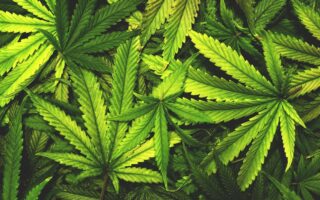As conversations around cannabis continue to permeate our cultural landscape, the term “marijuana” often comes with a multitude of associations. From relief for chronic pain to a recreational escape, its uses are diverse and its effects profoundly complex. However, in the midst of this growing discourse, one question frequently arises: Is marijuana an opiate? At first glance, the answer seems straightforward—after all, these are two distinct classes of substances with differing origins and effects. Yet, delving deeper into the realm of pharmacology reveals a tapestry of nuances, gray areas, and misconceptions that warrant exploration. In this article, we embark on a journey to demystify the relationship between marijuana and opiates, examining their definitions, effects on the body, and the broader implications for users and society alike. Join us as we untangle the threads of this intriguing inquiry and seek to clarify the role cannabis plays in the broader spectrum of pain relief and drug classification.
Table of Contents
- Understanding the Distinction Between Marijuana and Opiates
- Exploring the Chemical Composition and Effects of Marijuana
- The Role of Marijuana in Pain Management: Alternatives to Opiates
- Recommendations for Responsible Use: Navigating the Cannabis Landscape
- Q&A
- To Conclude
Understanding the Distinction Between Marijuana and Opiates
To comprehend the difference between marijuana and opiates, it’s essential to explore their origins and effects on the body. Marijuana, derived from the Cannabis plant, primarily contains the psychoactive compound THC (tetrahydrocannabinol) and several other cannabinoids. It is known for its potential to create feelings of euphoria and relaxation, often employed for recreational or medicinal purposes. In contrast, opiates, which include substances like morphine and codeine, are derived from the opium poppy and work by binding to opioid receptors in the brain to alleviate pain, inducing sedation and occasionally leading to addiction.
The two substances operate on different neurological pathways and produce distinct results. Understanding their variations can be summarized in the following points:
- Source: Marijuana comes from the Cannabis plant, while opiates are extracted from the opium poppy.
- Primary Effects: Marijuana may promote relaxation and euphoria, whereas opiates provide pain relief and can cause sedation.
- Potential for Addiction: While both substances can be habit-forming, opiates have a higher risk of dependence and addiction.
Exploring their payload in a comparative manner helps clarify their distinct characteristics:
| Feature | Marijuana | Opiates |
|---|---|---|
| Source | Cannabis Plant | Opium Poppy |
| Main Ingredient | THC | Morphine, Codeine |
| Primary Use | Recreational and medicinal | Pain management |
| Addiction Risk | Lower | Higher |
Exploring the Chemical Composition and Effects of Marijuana
The chemical profile of marijuana is complex and diverse, with its effects largely stemming from various active compounds known as cannabinoids. The most prominent of these, tetrahydrocannabinol (THC), is the psychoactive component that elicits the characteristic “high” associated with marijuana use. However, marijuana contains over 100 different cannabinoids, including cannabidiol (CBD), which is non-psychoactive and has garnered interest for its potential therapeutic benefits. Other components such as terpenes and flavonoids contribute not only to the aroma and flavor of the plant but also to its potential effects, creating a unique profile known as the “entourage effect.”
Unlike opiates, which act primarily on the opioid receptors in the brain to create analgesic effects, cannabinoids interact with the body’s endocannabinoid system. This system plays a crucial role in regulating various physiological processes, including mood, appetite, pain sensation, and memory. The distinction between marijuana and opiates lies in their mechanisms and the potential for addiction. While opiates have a high risk of dependency and severe withdrawal symptoms, marijuana is generally considered to have a lower potential for addiction, although individual experiences may vary. Below is a brief comparison of marijuana and opiates based on their chemical composition and effects:
| Aspect | Marijuana | Opiates |
|---|---|---|
| Primary Active Compounds | THC, CBD, Terpenes | Codeine, Morphine, Heroin |
| Mechanism of Action | Endocannabinoid system | Opioid receptors |
| Addiction Potential | Lower risk | Higher risk |
| Common Uses | Pain relief, Anxiety, Mood regulation | Pain relief, Cough suppression |
The Role of Marijuana in Pain Management: Alternatives to Opiates
As the search for effective pain management solutions continues, marijuana emerges as a significant alternative to traditional opiates. Unlike opiates, which can lead to dependency and severe side effects, cannabis offers a more natural approach to relieving discomfort. Patients experiencing chronic pain, such as arthritis, fibromyalgia, or neuropathic pain, may find relief through the therapeutic properties of cannabinoids. Key benefits of using marijuana for pain management include:
- Reduced dependency risk: Lower likelihood of addiction compared to opiates.
- Diverse compounds: Cannabinoids like CBD and THC can work synergistically for pain relief.
- Fewer side effects: Generally milder and less harmful than many prescription medications.
The effectiveness of marijuana in pain management is supported by numerous studies highlighting its potential to alleviate symptoms while improving patients’ quality of life. The method of consumption can also influence its efficacy, with options ranging from inhalation to edibles and oils. Consider the following comparison of methods:
| Consumption Method | Onset Time | Duration of Relief |
|---|---|---|
| Smoking | Immediate | 2-3 hours |
| Edibles | 30-90 minutes | 4-8 hours |
| Oils/Tinctures | 15-45 minutes | 4-6 hours |
Recommendations for Responsible Use: Navigating the Cannabis Landscape
Navigating the cannabis landscape requires awareness and understanding of its complexities. To engage with cannabis responsibly, consider the following recommendations:
- Educate Yourself: Familiarize yourself with the different strains, effects, and uses of cannabis. Knowledge of THC, CBD, and other cannabinoids can empower you to make informed choices.
- Consult Professionals: Seek advice from healthcare providers or educated professionals in the cannabis industry. They can offer insights tailored to your health needs.
- Know the Law: Stay informed about local laws governing cannabis use, possession, and distribution to ensure compliance and avoid legal troubles.
- Practice Moderation: Start with small doses to gauge your body’s response. Understanding your limits can help you make safer choices.
Additionally, being mindful of your consumption setting can greatly influence your experience. Create a comfortable and safe environment, and consider the following:
| Setting | Recommended Actions |
|---|---|
| Home | Use a trusted source, keep essentials handy, invite friends. |
| Public Places | Follow local laws, choose appropriate cannabis forms (like edibles). |
| Social Events | Stay responsible, monitor consumption, and maintain awareness. |
Q&A
Q&A: Is Marijuana an Opiate?
Q1: What exactly are opiates?
A1: Opiates are a class of drugs derived from the opium poppy plant. They include substances like morphine, codeine, and synthetic analogs, which are primarily used for pain relief. Opiates act on the body’s opioid receptors to produce effects like euphoria, sedation, and pain relief, but they also carry a risk of addiction and various side effects.
Q2: Where does marijuana come in? Is it related to opiates?
A2: Marijuana, or cannabis, comes from the Cannabis sativa plant and contains various compounds, notably cannabinoids like THC (tetrahydrocannabinol) and CBD (cannabidiol). While both marijuana and opiates can affect how the brain processes pain and mood, they belong to different categories of substances with distinct mechanisms of action.
Q3: So, are marijuana and opiates the same?
A3: No, they are not the same. While both can be used for pain management, they operate through different pathways in the brain. Opiates bind to opioid receptors, while cannabinoids from marijuana engage with the endocannabinoid system. This foundational difference means that the two substances have unique effects, risks, and therapeutic potentials.
Q4: Can marijuana be used as a substitute for opiates?
A4: Some individuals and healthcare professionals suggest that marijuana may serve as an alternative or adjunct therapy for managing pain, particularly in cases where traditional opiates are not effective or carry unacceptable risks. However, more extensive research is needed to determine its efficacy and safety profile compared to opiates.
Q5: Are there any risks associated with using marijuana?
A5: Yes, marijuana use can come with its own set of risks and side effects, including cognitive impairment, anxiety, and potential dependency. Furthermore, the effects can vary widely depending on the strain, method of consumption, and dosage. It’s essential to approach marijuana use thoughtfully and consult with a healthcare provider when considering it for medicinal purposes.
Q6: How do public perceptions differ between marijuana and opiates?
A6: Public perception is changing rapidly, especially as more states and countries reconsider marijuana’s legal status and potential medicinal benefits. Opiates, on the other hand, are often viewed with caution due to their strong association with addiction and the opioid crisis. This difference highlights the evolving landscape of drug policy and societal attitudes toward pain management options.
Q7: can we classify marijuana as an opiate?
A7: No, marijuana cannot be classified as an opiate. They are fundamentally different in composition, action, and effects. While both may be used for similar purposes, it’s important to recognize and understand their distinct nature and roles in medical and recreational contexts. Always consult qualified professionals when considering treatment options.
To Conclude
In concluding our exploration of the relationship between marijuana and opiates, it’s clear that while both substances can provide relief from pain and discomfort, they belong to fundamentally different categories of drugs with distinct effects on the body and mind. As the conversation surrounding cannabis continues to evolve, it becomes essential to differentiate the myriad plants and compounds that exist in the landscape of pain management. Whether for medicinal or recreational use, understanding the science behind these substances empowers consumers to make informed choices. the complexity of marijuana and opiates reminds us that the world of pharmacology is as rich and varied as nature itself, inviting ongoing research and conversation. As we journey forward, let us engage with these topics thoughtfully, always seeking clarity and knowledge in an ever-changing discourse.



